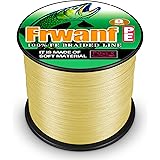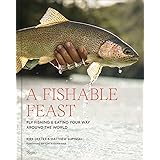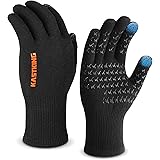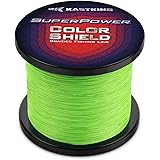The excitement captured in the video above, with the fisherman’s jubilant exclamations, perfectly illustrates the thrill of a successful catch. However, for many anglers, this joy can sometimes be overshadowed by underlying concerns about boat safety. The unforgiving nature of the open water means that traditional vessels are often susceptible to unexpected incidents, where a breach in the hull or a sudden capsize could lead to a truly perilous situation.
Fortunately, a profound solution has emerged in modern marine engineering: the development of the **unsinkable fishing boat**. This advancement offers a revolutionary approach to maritime safety, ensuring that even under adverse conditions, a vessel retains its buoyancy and stability. It is a concept that moves beyond the vulnerabilities of past designs, bringing a new level of confidence to those who venture out to sea.
Understanding Unsinkable Boat Design Principles
The notion of an “unsinkable” vessel might conjure images of mythical invincibility. Yet, in practical terms, it signifies a boat meticulously engineered to resist sinking, even if it becomes swamped or significantly damaged. This is achieved not through magical properties, but through sophisticated design and the strategic use of advanced materials.
Unlike the ill-fated Titanic, which relied on watertight compartments that could be breached, modern unsinkable fishing boats integrate features that ensure flotation regardless of hull integrity. It is understood that a truly unsinkable design prioritizes the ability to remain afloat, allowing occupants precious time for rescue or self-recovery. This distinction is crucial for understanding the inherent safety offered by these innovative vessels.
Engineering Buoyancy with Advanced Materials
The primary method through which a boat is rendered unsinkable involves the incorporation of closed-cell foam flotation. This specialized foam, often injected into various cavities within the hull, serves a critical purpose. It displaces water, providing an intrinsic buoyant force that keeps the boat afloat even when its main compartments are filled with water.
Imagine if your boat’s hull was accidentally punctured by a submerged object; in a conventional vessel, this could lead to rapid flooding and sinking. However, with an unsinkable design, the closed-cell foam prevents water from permeating, thus preserving buoyancy. Materials such as linear low-density polyethylene (LLDPE) for rotomolded hulls or composites like fiberglass with foam cores are frequently selected for their inherent floatation properties and resistance to water absorption.
Crucial Design Elements for Enhanced Safety
Beyond foam, several other design elements are systematically integrated to bolster the unsinkable nature of these fishing vessels. Double-hull construction, where an inner and outer hull create a sealed void, is often employed. This technique adds an extra layer of protection against punctures and provides additional space for flotation materials.
Furthermore, self-bailing decks are considered an essential feature, particularly for smaller fishing boats. These decks are designed so that any water taken over the bow or from rain is automatically drained overboard through scuppers, preventing the accumulation of water that could compromise stability. It is ensured that water is efficiently expelled, maintaining the vessel’s light weight and balance.
Stability and the Unsinkable Fishing Vessel
While buoyancy ensures a boat stays afloat, stability is equally paramount for safety and usability, especially in choppy waters. Unsinkable fishing boats are often designed with wider beams and lower centers of gravity. This combination significantly reduces the likelihood of capsizing, even when subjected to strong waves or unexpected shifts in weight, such as a large catch being brought aboard.
Consider the scenario where a boat is hit broadside by a large wave; a stable design allows it to roll with the wave rather than overturning. Enhanced hull designs, sometimes incorporating multihull configurations like catamarans, further contribute to this stability. The aim is always to minimize the risk of the boat flipping, ensuring that the occupants remain in a safe, upright position.
Integrating Comprehensive Marine Safety Features
The ultimate goal of an unsinkable fishing boat is to provide an unparalleled level of safety, and this extends beyond just the hull design. Modern vessels are frequently equipped with a range of additional safety features that complement their inherent buoyancy. These might include integrated grab rails, non-slip surfaces, and robust deck hardware.
Electronic safety devices are also considered crucial, even if the boat itself cannot sink. Emergency Position Indicating Radio Beacons (EPIRBs) or Personal Locator Beacons (PLBs) are often recommended, as they allow for quick transmission of a distress signal to rescue authorities. Flares, first-aid kits, and sufficient life jackets for all onboard are always vital components of a well-prepared fishing trip, offering layers of protection even when the boat itself is considered highly resilient.
The Undeniable Peace of Mind for Fishermen
For those who love fishing, the primary focus should be on the experience itself: the anticipation of a bite, the skill of the retrieve, and the tranquility of the water. With an unsinkable fishing boat, a significant burden of worry is lifted from the shoulders of the angler. The confidence instilled by knowing their vessel is designed for maximum safety allows for a greater appreciation of the sport.
This peace of mind is not just for the person at the helm; it extends to their families and loved ones ashore. Concerns about safety are dramatically reduced, allowing everyone to enjoy the sport without constant apprehension. It is often reported that owners of these advanced boats feel a greater sense of freedom to explore different fishing grounds and tackle more challenging conditions, knowing their primary investment is protected.
Protecting Your Investment and Enhancing Your Experience
An unsinkable fishing boat represents a significant investment, but it is one that is diligently protected by its inherent design. The boat itself, along with valuable fishing gear and electronic equipment, is far less likely to be lost due to a sinking event. This preservation of assets adds another layer of financial security for boat owners.
Moreover, the enhanced safety profile means fewer unforeseen interruptions to fishing plans. Imagine a situation where sudden bad weather would typically force a rapid return to shore; with an unsinkable, highly stable vessel, a safer return can be managed. This reliability contributes to more enjoyable and productive outings on the water, transforming the fishing experience itself.
Selecting Your Ideal Unsinkable Fishing Boat
When considering an unsinkable fishing boat, several factors are thoughtfully weighed to ensure the perfect match for individual needs. The size of the boat, for instance, should align with the typical number of passengers and the type of fishing activities planned. Larger vessels are naturally preferred for offshore adventures, while smaller, more agile unsinkable boats excel in inshore environments.
The construction materials and specific features, such as the type of foam flotation and hull design, are also carefully evaluated. It is advised to research manufacturers known for their commitment to safety and quality. Checking for certifications, such as compliance with Coast Guard standards in regions where they apply, can provide additional assurance of a vessel’s robust design and performance. Proper maintenance routines are also followed to ensure the longevity and continued safety performance of the boat.
Ultimately, the advent of the **unsinkable fishing boat** has revolutionized marine safety, transforming the potential dangers of the open water into an environment where anglers can truly focus on the thrill of the catch, just as enthusiastically captured in the video above, with the utmost confidence in their vessel.








